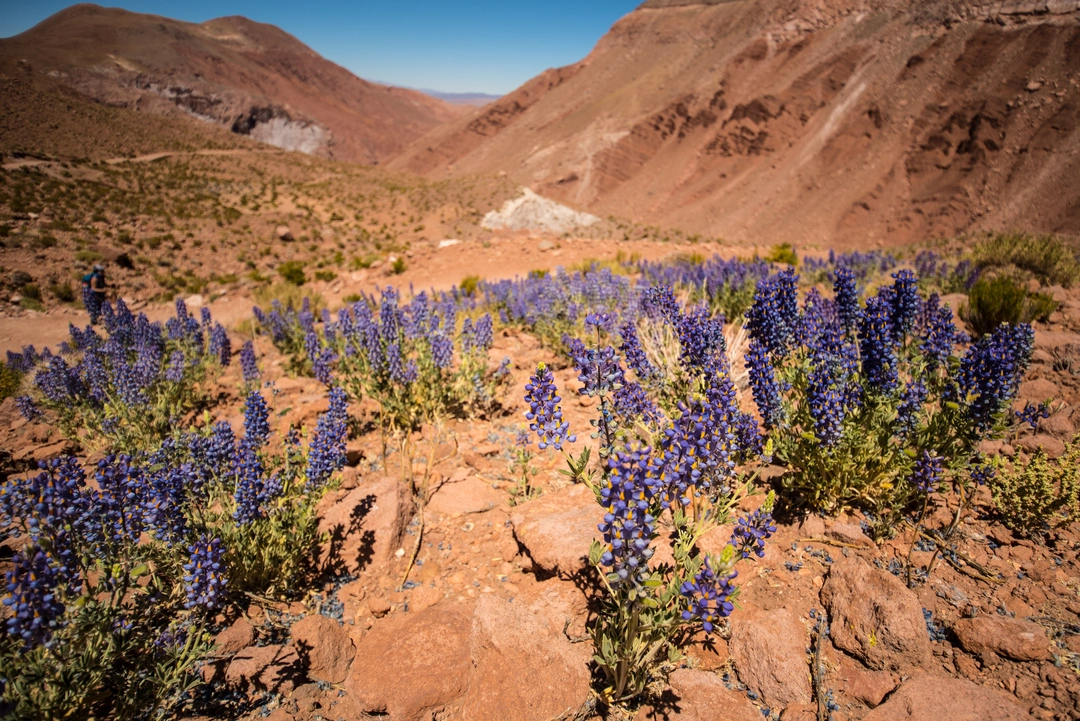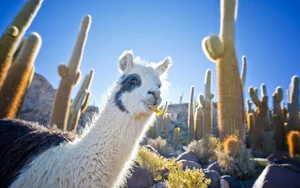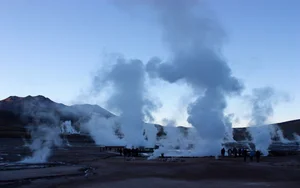Our Atacama Must series continues as former Media Coordinator, Helen, shares her experiences taking in the colorful sights of the Atacama Desert. One of the top attractions in the area must surely be its glittering lagoons, whether altiplanic lakes or endless salt flats. There is a lot more to see and do here rather than just snapping a few photos from the bus - read on to get a sense of the adventure that awaits!
We are driving away from San Pedro under the watchful gaze of Lascar, a volcano appropriately named ¨tongue of fire¨ in kunza, the original language of the region. What was once the dusty streets of the town has given way to the open plains of the desert; this, the world’s driest, is a cacophony of color, a view so vivid that it quickly overwhelms the senses.
We are making our way to Toconao, a blink-and-you’ll-miss-it cluster of tidy homes that still maintains an Andean charm. First, we have to pass through a forest of tamarugo (Prosopis tamarugo), nothing more than a few rows that we quickly blip through. These trees are the remains of an ambitious plan to cover the desert with a forest that came to an end with Pinochet’s dictatorship in the 1970s. The tree, while not native to the San Pedro area, is from the Atacama, and has roots that dig down 10 times deeper than most other trees in order to seek out underground water.
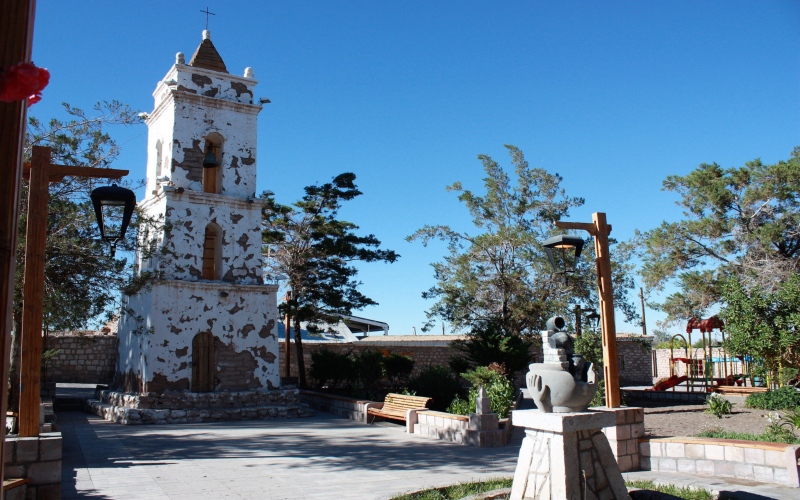
Toconao is interesting because it has always been known as the ¨rock extraction place¨, home of the liparite rock that was originally used for construction in the region. Here we pass through the main square and marvel at its church, originally planted by the Spanish and finished in 1750AD, and which cunningly intertwined native beliefs in order to help the native people convert to Christianity. The door is made of the desert’s best resource, cacti, an ingenious material when San Pedro has only two types of trees (Chañar + Algarrobo). The door has a picture of a donkey (to symbolize the Spanish) and a llama (to symbolize the Andean people). We visit the local store to see woolen gifts being made in action with the telar, or loom.
Our Tip: Many of the items for sale in this region are actually made in Bolivia, but woolen products (made with imported alpaca or local llama wool) and knitted using traditional cactus needles are made locally.
As we make our way deeper into the desert, we notice that the horizon is now filled with plants (there is more water access here due to lower ground). We then come to the salt flat (which is not actually flat) which stretches outwards towards the distant volcanoes and which contains all the colors of the rainbow. Birds are everywhere - to each side as well as in the air above, while lizards literally dash underfoot and cause flurries of jumping tourists as they try to get clear of their trajectories We see sandpipers and plovers but the real star of the show is the flamingo.
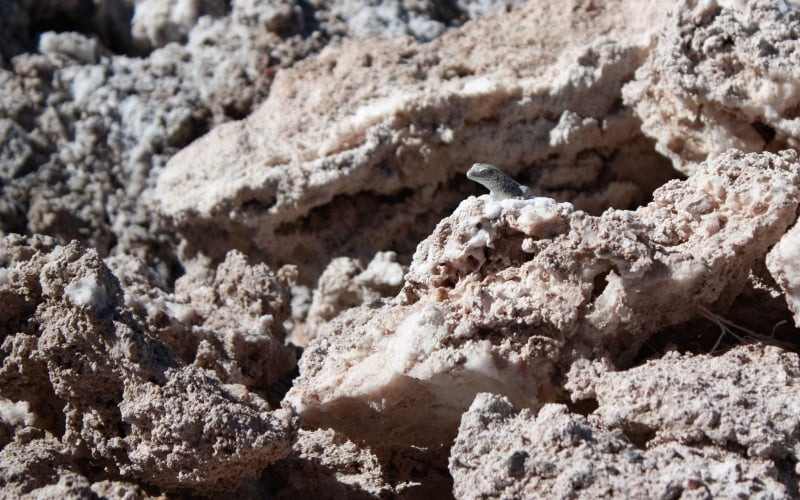
There are six species of flamingo in the world and three of them – Andean, Chilean, and James - can be seen right here in the Atacama. The salt flat is fed by minerals that leach outwards from the volcanoes and infiltrate from underground; be warned: this salt may be beautiful, but avoid filling a bag to take home will give you a shot of arsenic poisoning!
Driving away from the salt flat, and Chile’s relationship with the underground soon becomes apparent. There are mines – working and defunct – everywhere, heralding that this long, skinny nation is, in fact, the world’s greatest producer of lithium and copper. Not far from here, either, is ALMA, the observatory with the world´s most powerful telescopes.
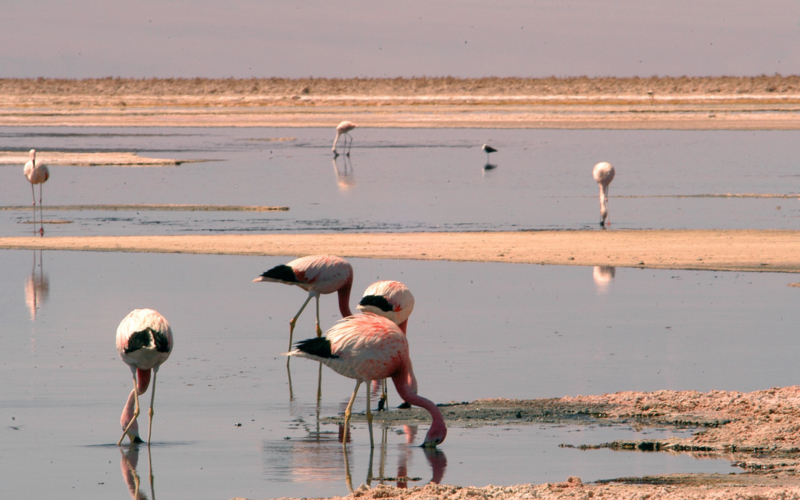
Our Tip: No visit to the Atacama is complete without an astronomical adventure; email us for the options.
We are ascending and as we do so the sky becomes crisper, the air fresher, and the mountains closer. There is coiròn grass (bajabrava), a variety that calls only the altiplano home, and which is a beloved snack of the vicuña. Its tufts always appear in semi-circular fashion – apparently, the vicuña only munches half before moving on. Here in the Atacama you can expect to find three types of camelid: there’s the guanaco, an untamed beauty that lives throughout Chile; the vicuña, a more slender species that lives wild in the altiplano; the llama, a domesticated descendent bred by the Andean people from guanaco; and the alpaca, known for its ridiculously soft fleece that was bred from the vicuña (the majority of these animals live in Peru).
The Miscanti Lagoon is an oasis in a sea of yellow, green, brown, red, and even purple; almost like a mirage as our heads swim with the puna of 4000+ meters above sea level. It really is quite spectacular, its blue contrasting with the melting snow that feeds it from the nearby volcanoes. We spend some time walking around it before visiting neighboring Meñiques Lagoon, one of the last breeding spots of the Horned Coot which feed on the lake's algae. These birds live precariously under the watchful eyes of the Andean Gulls that loom persistently close.
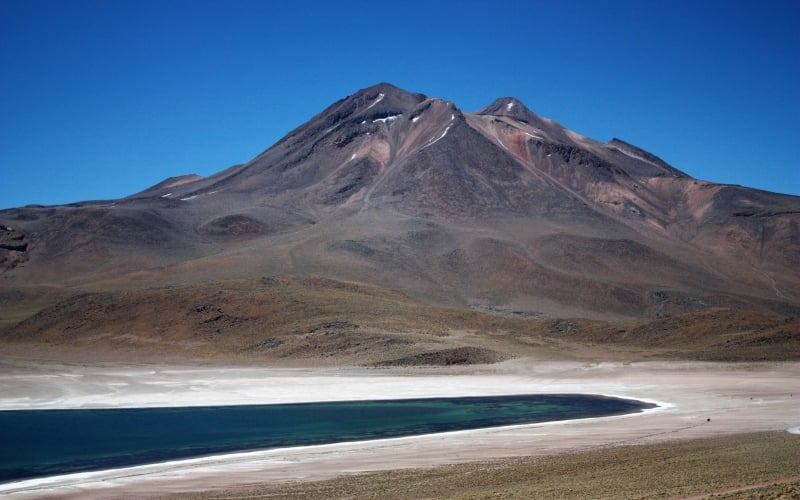
Lunch is a simple affair in Socaire, a small roadside village known for its underground water canals that once fed thousands of terraces long before the Incas. Socaire used to be an important Incan trading destination of some 300-400 people but as the land grew drier with time it grew smaller and smaller until it was almost abandoned. Today, tourism is helping to revive the livelihoods of the locals who provide meals in Socaire’s tiny restaurants.
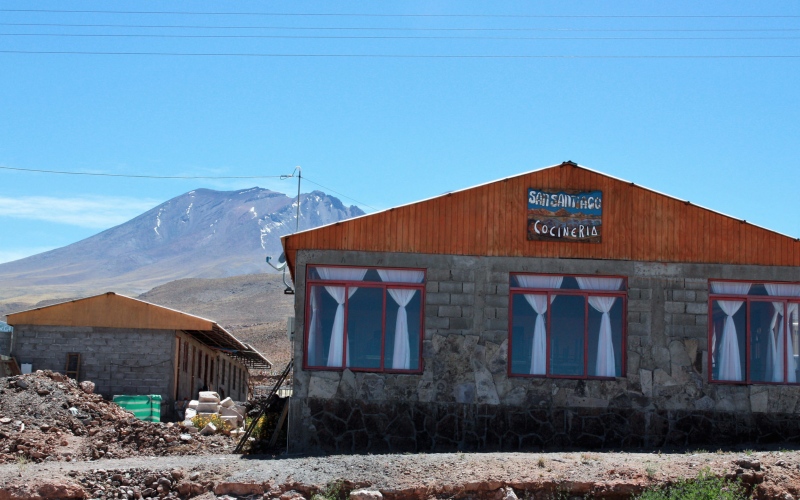
We return to San Pedro by taking a winding, hair-raising road along the mountain. It’s an adventure, like everything else so far in San Pedro de Atacama, and one not likely to be forgotten in a hurry. But the desert has one more gift to give: beside the road, a family of vicuñas are grazing, the perfect backdrop to a perfect day.
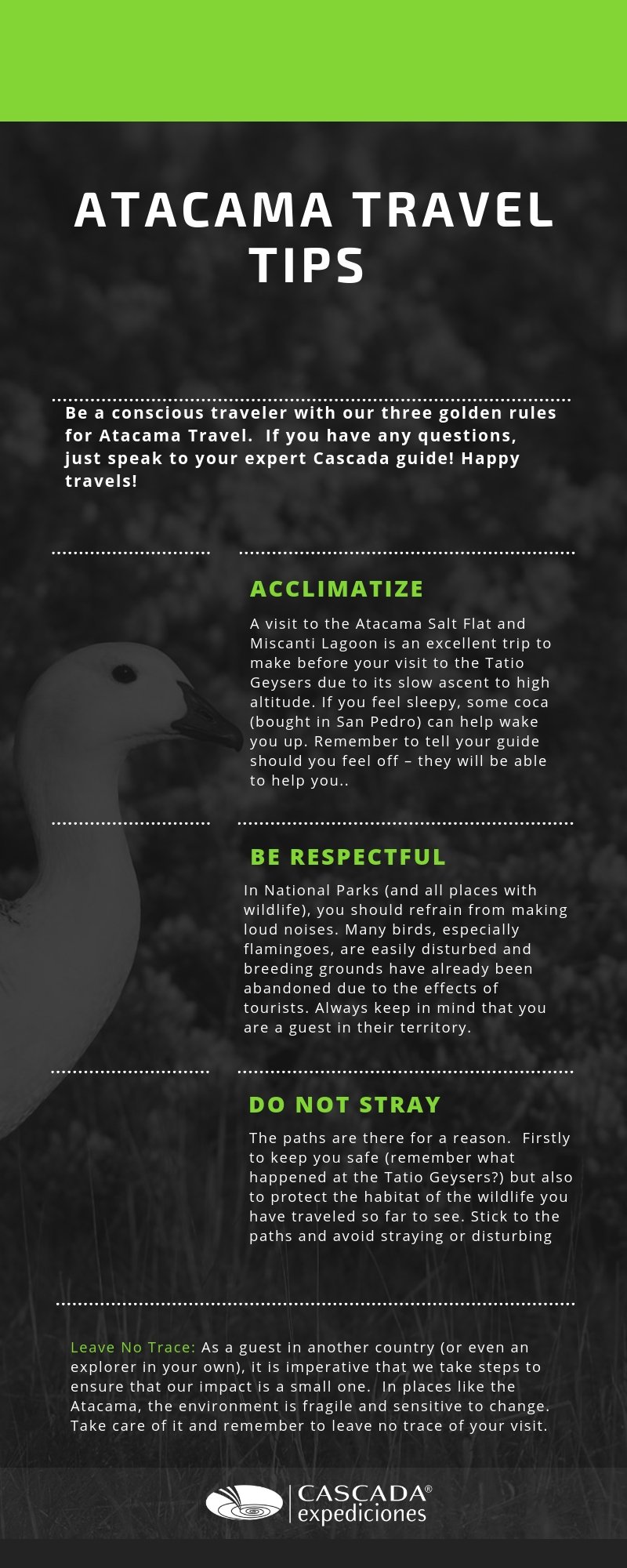
Discover more about our trips to the Atacama Desert by visiting our programs page or

